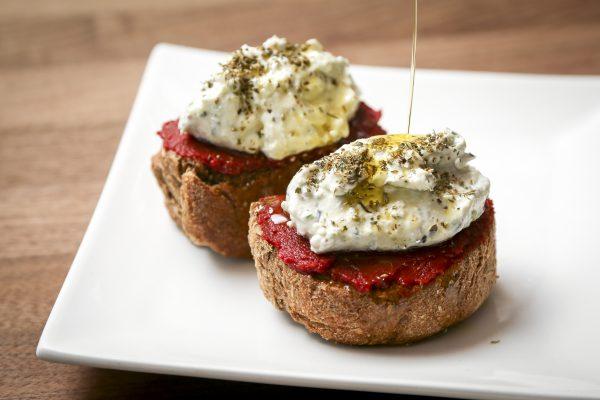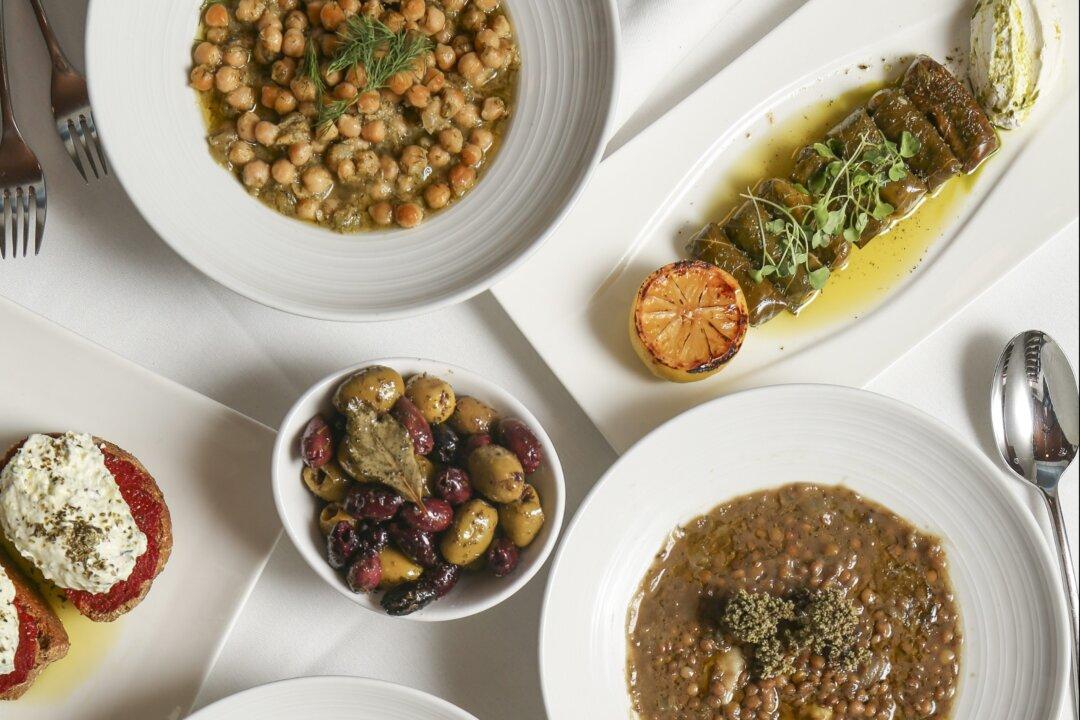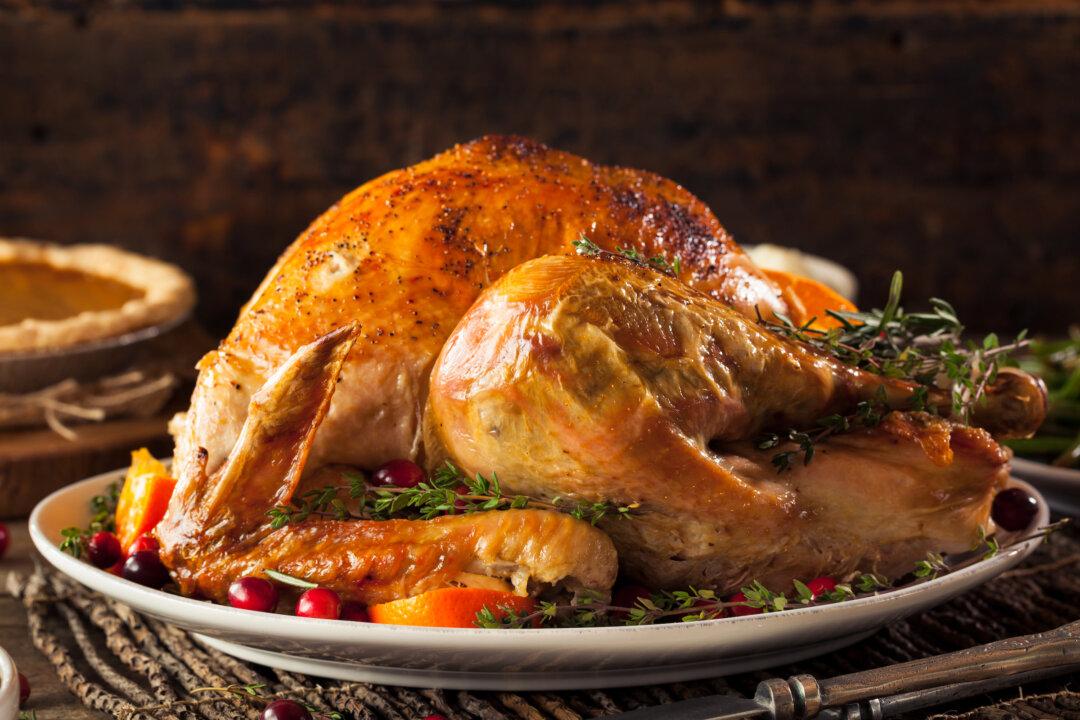Maria Loi, chef and owner of Loi Estiatorio, and long-time ambassador of the Greek Mediterranean diet, shares her essential traditional Greek recipes for health, happiness, and longevity.
Barley Rusks With Tomatoes (Dakos me Pougi)

Dakos, barley rusks with tomato. Samira Bouaou/The Epoch Times






